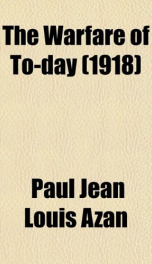the war of positions

Purchase of this book includes free trial access to www.million-books.com where you can read more than a million books for free. This is an OCR edition with typos. Excerpt from book: This is the movement for which all the troops in line are watching. Through incessant activity they try to keep the enemy fixed where he is; they thus prohibit him from retiring his artillery and clearing the men from his trenches; they inform themselves concerning his situation and his intentions by every possible means, especially at night. On learningof the expected retreat theyfollowup the enemy's troops closely, harass them in every possible way, and pursue them without respite. Not only do they thus secure a large section of territory, of which the possession may be useful; but above all they bring about the capture or destruction of men and materiel in large quantities, which is a sure token of victory. ROle of the High Command in an Offensive The Commander-in-Chief chooses the zones of attack, determines the effectives which he will devote to each of them, and fixes the day on which the attack shall take place. He confides his purpose to each of the army commanders whose business it is to direct an attack. He indicates to each of them the zone which is to be his, the task entrusted to him, the effectives and material resources at his command, and the ultimate aim for him to attain. Each army commander acting on these data attends to the distribution of his army corps and to the drawing up of the reserves at his disposal; he indicates to every commander of an army corps his zone of attack, the part he is to play and his successive objectives; he gives all the orders necessary for the reconnaissance of the enemy's positions, the preparation of the terrain, the organization of supplies. Every army corps commander gives orders relative to the preparation and execution of the attack within the limits of his own zone and his own particular mission. When the ...
Info about the book
Author:
Series:
Unknown
ISBN:
0679738959
Rating:
5/5 (3)Your rating:
0/5
Languge:
English
Users who have this book
Users who want this book
What readers are saying
What do you think? Write your own comment on this book!
write a commentGenre
if you like the war of positions try:
Other books by this author
Do you want to read a book that interests you? It’s EASY!
Create an account and send a request for reading to other users on the Webpage of the book!


